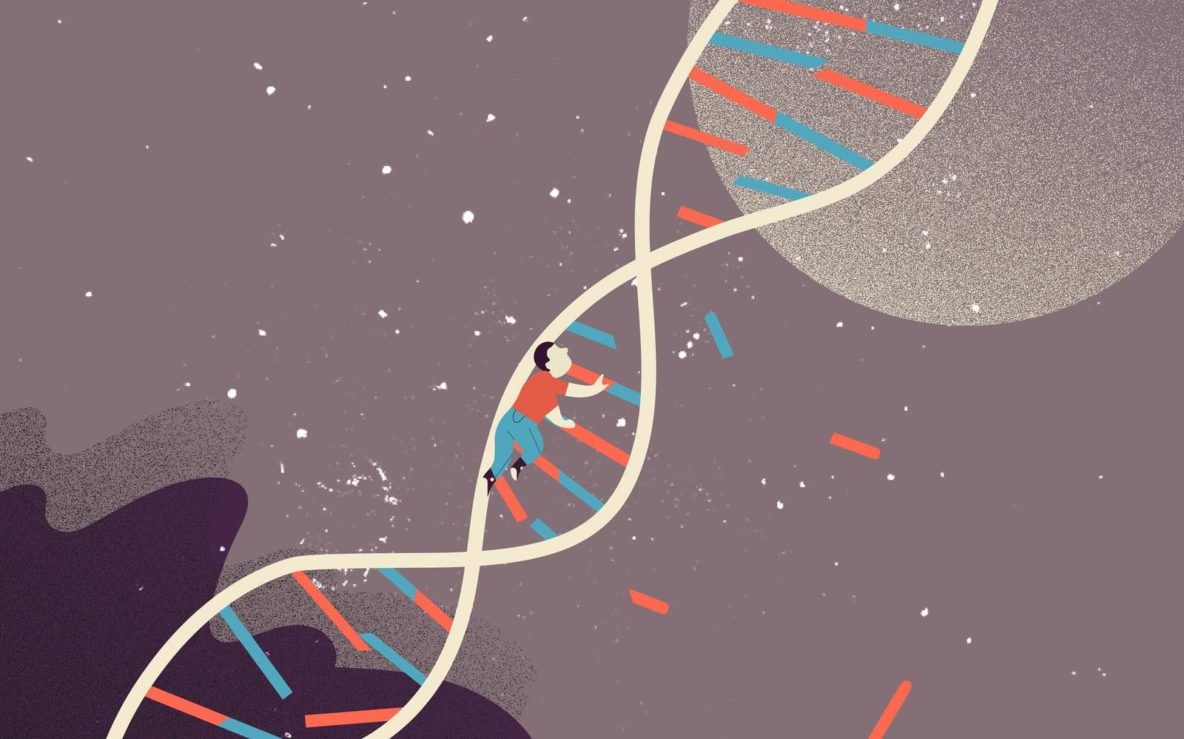“Trauma” is a heavy and haunting word. For many Americans, it conjures images of troops returning from Iraq and Afghanistan. The emotional toll from those wars made headlines and forced a healthcare reckoning at the Department of Veterans Affairs.
Dr. Nadine Burke Harris, a pediatrician, would like to see a similar reckoning in every doctor’s office, health clinic and classroom in America — for children who have experienced trauma much closer to home.
Burke Harris is the founder and CEO of the Center for Youth Wellness in San Francisco. She’s spent much of her career trying to spread awareness about the dangers of childhood toxic stress. Her 2014 TED talk on the subject has more than 3.5 million views; the message is simple and research-based:
Two-thirds of Americans are exposed to extreme stress in childhood, things like divorce, a death in the family or a caregiver’s substance abuse. And this early adversity, if experienced in high enough doses, “literally gets under our skin, changing people in ways that can endure in their bodies for decades,” Burke Harris writes in her new book, The Deepest Well: Healing the Long-Term Effects of Childhood Adversity:
“It can tip a child’s developmental trajectory and affect physiology. It can trigger chronic inflammation and hormonal changes that can last a lifetime. It can alter the way DNA is read and how cells replicate, and it can dramatically increase the risk for heart disease, stroke, cancer, diabetes — even Alzheimer’s.”
In short, early stress can shorten your life.
That’s why, as a clinician, Burke Harris asks parents and guardians of new patients to fill out a short, confidential questionnaire. She wants to understand just how much stress these children have experienced.
Are this child’s parents or guardians separated or divorced?
Is anyone in the home depressed or mentally ill?
Has the child seen or heard household members hurt or threaten each other?
Has a household member sworn at, insulted, humiliated, or put down the child?
The list goes on, including exposure to sexual abuse, drug or alcohol addiction in the house, neighborhood violence, food insecurity and housing instability.
You can find out your own ACE score here.
I recently spoke with Burke Harris about the impact this exposure can have on children and what can be done about it. Our interview has been edited for length and clarity.
What are we talking about when we talk about toxic stress?
When kids are exposed to very high levels of chronic stress or adversity — or really intense and scary experiences — it actually changes the way their brains and bodies are wired. And that can lead to changes in brain development, changes in the development of the immune system, our hormonal systems, and even all the way down to the way our DNA is read and transcribed. And that is what can lead to this condition that’s now known as toxic stress — and put folks at an increased risk of lifelong health problems.
To help our readers understand toxic stress, I’d like you to explain how, exactly, the body responds to stress. In the book, you use an analogy that makes this really accessible: The bear.
Absolutely. Imagine you’re walking in the forest, and you see a bear, right? The first thing that happens is that the amygdala, which is our brain’s alarm center, sounds the alarm. So, our brain sends a signal down to our adrenal gland, which makes adrenaline and other stress hormones, including cortisol, and so your heart begins to pound, your pupils dilate, your airways open up, and you are ready to either fight that bear or run from the bear.
But, if you were to think about it, fighting a bear wouldn’t seem like a good idea, would it? Because bears are big and they have teeth and they have claws. And that is why this alarm center in your brain, your amygdala, actually sends neurons to the part of your brain that regulates executive functioning: your prefrontal cortex. And it says, ‘You know what? We’re not going to do a lot of thinking right now. So we’re just going to turn you down. Just be quiet. Because now is not the time for thinking. Now is the time for reacting.’
Another nice thing that your brain does for you when you’re facing a mortal threat is it activates your immune system. And that’s not obvious, but when you think about it …
That’s totally not obvious.
Yeah, but it makes a ton of sense — because, if you’re getting ready to fight a bear, that bear may get his claws into you, and so you want your immune system to be primed to bring inflammation to stabilize the wound, right? All of this, it’s absolutely brilliant. It makes total evolutionary sense.
This is exactly what we need to be able to survive an encounter with a bear in the woods. And, if it happens once in a while, then that’s okay.
But the problem is: What happens when it occurs over and over and over again, especially when children’s brains and bodies are just developing?
What sorts of things in a child’s life can lead to toxic stress?
The real, seminal research that was done on this topic was the Adverse Childhood Experiences Study (ACEs) that was published in the ’90s. And in that study the researchers at the Centers for Disease Control and Prevention and Kaiser Medical Center looked at 10 categories of adverse childhood experiences. Those include physical, emotional, and sexual abuse, physical and emotional neglect, or growing up in a household where a parent is mentally ill, substance-dependent, incarcerated, where there’s parental separation or divorce, or where there’s domestic violence.
BY: CORY TURNER
IMAGE: LA JOHNSON
